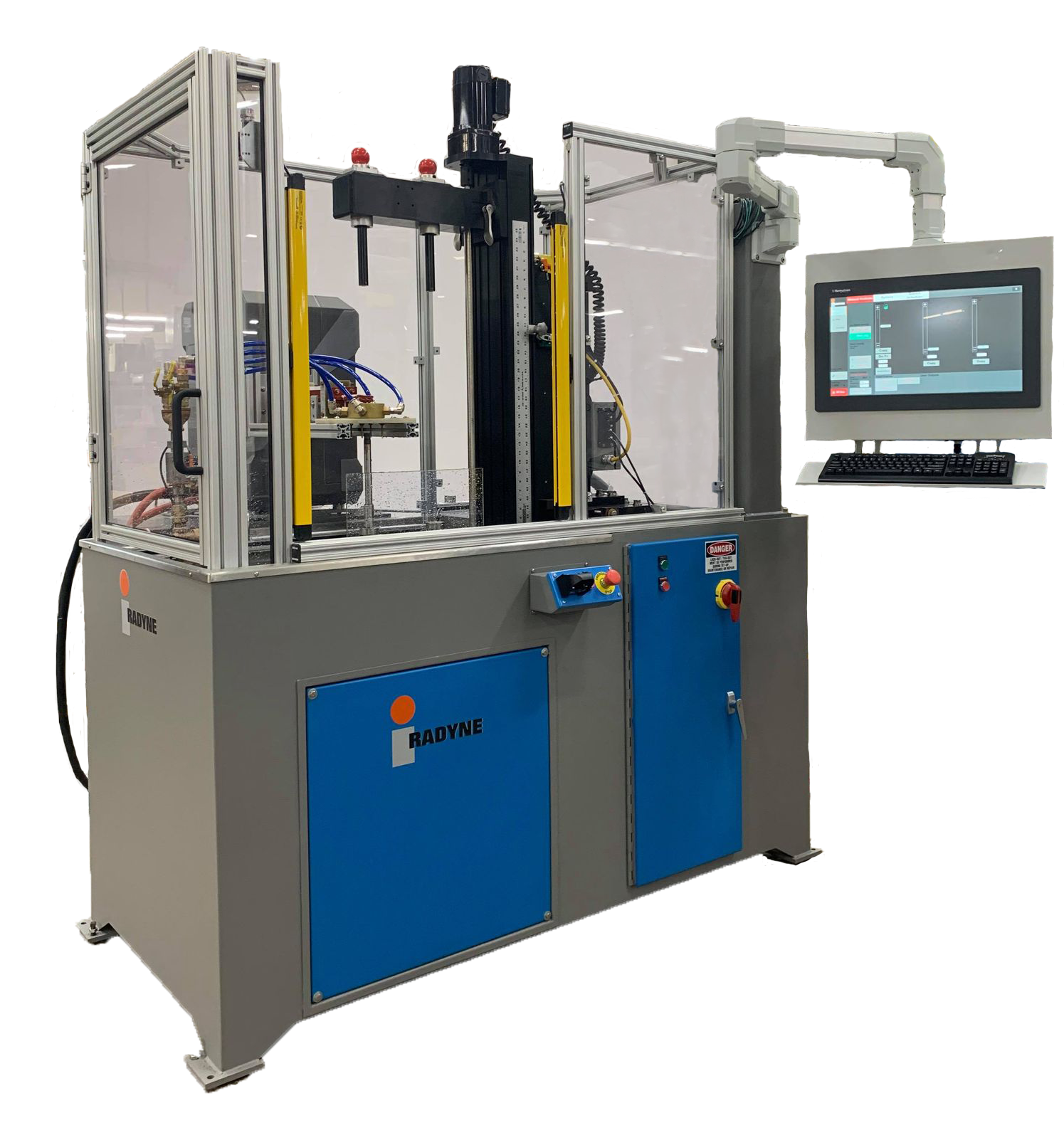Induction Hardening Process
April 7th, 2021

Induction hardening is the heating process that increases the hardness and tensile strength of ferrous materials while induction tempering is used to increase the toughness of iron-based alloys. Tempering is usually performed after hardening in order to reduce some of the excess hardness.
The IPEC team’s objective with the client is to harden and temper plates while maintaining flatness without warping the plate. The team conducted lab tests in addition to utilizing formulas and decided to initially approach the project with all parts stationary using a large oval-shaped coil. Radyne’s coil department custom made a cage coil to heat treat the entire plate in order to reach transformative heat temperatures of 1600 degrees Fahrenheit. In order to do this, a 150kW TFD with a pyrometer was used. Initial results reached the desired temperature but the team saw distortion within the plate.
The next iteration of figuring out a process for this part had the team shift from statically heating the part to scanning the part through a coil. The project shifted from TFD cage coil to hardening and tempering using an induction ScanMaster with Motus controls and quench base. In addition, the coil changed to a two turn oval coil. The two turn coil wasn’t reaching ideal power output, so the team switched to using a one turn coil instead. With the new coil, were able to reach ideal heat evenly across the steel plate, but learned there are uneven hardness on the surface. The reasoning behind this is the way the quench was hitting the part after being scanned through the coil. The best way to reach an even harden, is setting up a more evenly distributed quench rig and quench flow/pressure.
After a few iterations of hardening and tempering with an induction scanner, we are meeting specifications with the new quench set up. When measuring hardness, we cut the part in half and look how deep the hardness reached on both sides of the part using equipment in our IPEC lab.




